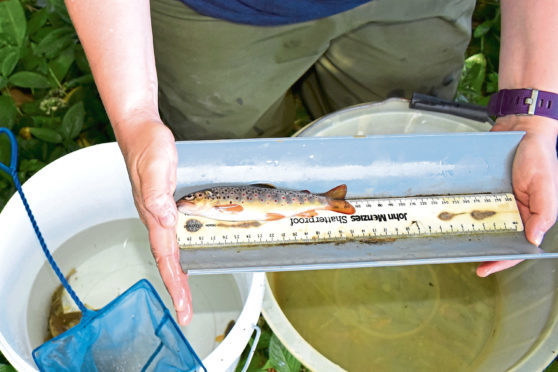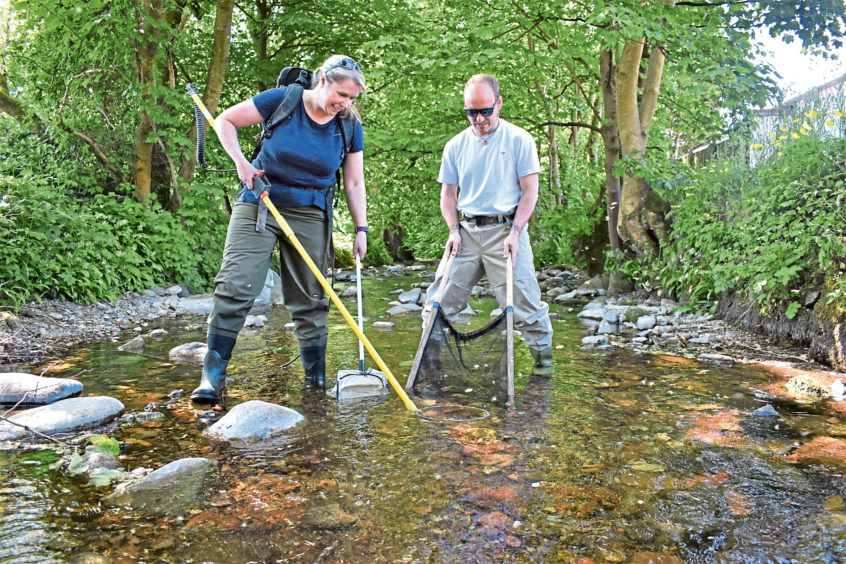A flash of silver in the swirling pool. A cry goes out: “There’s one, there’s one!” Up scoops the net and within its mesh lies a glistening salmon parr.
I remove the young salmon from the net and briefly examine it before placing it into a bucket of water. It is a most attractive fish, no more than 11cm long with burnished flanks and a long slender body. It is hard to imagine that one day this could well turn into a most impressive fish weighing several kilos.
I’m with fishery biologists Jo Girvan and David Eastwood of the Forth Rivers Trust electro-fishing in the Dollar Burn, one of the tributaries of the River Devon situated at the foot of the Ochils. Part of the work of the Trust is to monitor fish populations in the Forth catchment, which covers an area of around 3,600 square kilometres, taking-in 10 major rivers and countless tributaries.
One way of monitoring fish populations, especially juveniles, is electro-fishing – a specialist technique that temporarily stuns the fish, enabling them to be scooped-up into a net before being later released unharmed back into the river.
We wade slowly upstream, with Jo taking the lead and sweeping an anode into the water ahead of her. David is right behind her and he quickly lifts up into his net any fish affected by the electrical current, which are then placed into a pail of water. Fish that are missed, recover within seconds and dart back to the bottom of the burn.
Jo was especially keen to electro-fish in this part of the Dollar Burn as a new fish pass had been installed there a few years ago by the Ochils Landscape Partnership to encourage salmon to spawn in the higher reaches. At about the same time, the Forth Rivers Trust had renovated and improved an existing fish ladder on a nearby weir on the River Devon – but had this work led to an increase in young salmon?
Over the course of an hour, we caught a good number of young trout, as well as four salmon parr, which were measured and recorded. Careful attention was paid to any fry that were caught, as this signals the success or otherwise of the most recent spawning season.
While not a lot of salmon were caught, it was still more than from a previous sampling, and by doing such monitoring on a regular basis long-term trends in the river system can be identified.
We also caught an eel, which caused a bit of excitement, as their numbers have plummeted alarmingly in Europe over the last few decades. This eel was about five years old, and it will stay in this burn for many more years yet before embarking upon an epic migration to the Sargasso Sea off central America to spawn.
Why swim so far to breed? Well, no-one knows. But it does make the eel one of our most amazing creatures – an enigma living right on our very doorsteps.
Info
The Forth Rivers Trust aims to conserve and protect rivers and the wildlife that depends on them. It provides learning and voluntary activities for people of all ages so they can engage with and enjoy local rivers.











